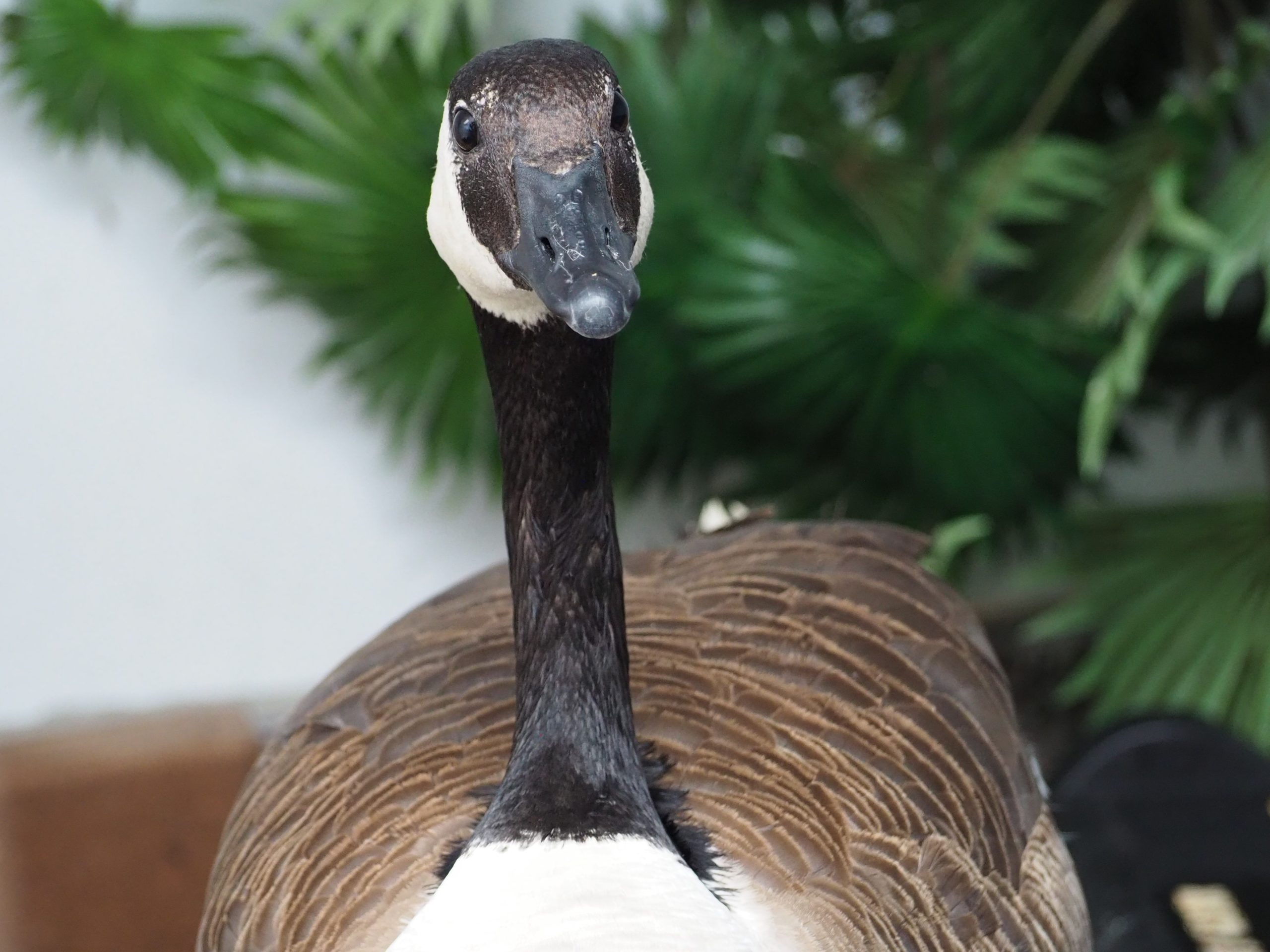By Holly Hastings
Have you ever watched a bird flutter through Canada’s winter and wonder, did it forget to migrate?
Don’t fret, you are not alone!
There is a common misconception that all birds migrate during winter, so let’s take a look at the birds that choose to stay home.
Birds that do not migrate include:
- Woodpeckers (hairy, downy, red-bellied, pileated, and northern flickers)
- Several owls, including great horned owls, barred owls, and screech-owls
- Game birds like wild turkeys, ring-necked pheasants, chukars, quail, and grouse
- Tits and chickadees
- Hardy corvids, like blue jays, common ravens, black-billed magpies
- Songbirds like northern cardinals, northern mockingbirds and verdins
- Some normally migratory animals, including Canada geese, ducks & robins
Did the last bullet point shock you? It sure surprised me. Despite the loud and beautiful migrations of geese soaring through the air on their way to the tropics that many of us gawk at, it may come as a surprise to learn that some geese do not migrate. Due to the changing climate in Canada (and the world), some watering holes do not freeze for long periods, allowing geese to remain and defend territory regardless of harsh temperatures.
Why not migrate?
Firstly, there are some benefits to avoiding migration; by not migrating, animals can reduce their risk from hazards such as predation, hunting, habitat loss, storms and collisions with powerlines. There are three key benefits[i] of sticking around that could explain some birds avoiding migration:
- Saving energy: birds do not have to use high metabolic costs for travelling. Instead, that energy is put towards activities like watching for predators and raising chicks.
- Defending territory: access to superior habitats and are ready to protect them when migrating birds return.
- Nurturing young: more time can be spent on parental care and is associated with a higher likelihood of survival. Some non-migrating birds may raise higher numbers of offspring increasing their generational reproductive fitness.
It is important to remember that birds, and all animals, do not choose to do such activities as migration. Some evolved to migrate, while others evolved to remain at home.
Bird brains and migration
In 2005, an interesting article[ii] was published on the brain size between migratory and non-migratory birds. The study showed that non-migratory birds tended to have larger brain size than migratory birds. While brain size does not necessarily mean greater intelligence, it becomes interesting when we take adaptation into account. Two important reasons for the potential explanation of this brain increase as follows:
- Feeding flexibility: non-migratory birds explore more when looking for food. The blackbird Turdus merula has even been witnessed foraging for food with a stick, a behaviour previously associated with high intelligence in our closest living relatives, the chimpanzees.
- Inventiveness: the research states that brain tissue requires a lot of energy, so migratory birds could benefit from having smaller brains to save their energy for their commute. The team of researchers also argue that having a smaller brain could be a trigger for migration because of the lack of inventiveness when it comes to feeding in the winter (no food around? Time to go!)
With the above information, this could mean that migratory birds may have more challenges in adapting to future environments due to climate change, and could potentially be a greater risk for extinction than those that stay home.
But, how on earth do non-migratory birds stay warm[iii] through Canada’s harsh winters?
How you can help
This is where you can help make the lives of winter birds easier! By purchasing the right foods for your backyard feeders this winter, you can help birds eat a great deal of fat-rich foods to generate enough necessary heat. Birds feathers work the same way puffy-down coats do for humans, the down traps your body heat into little pockets of warmth. The same is true for bird feathers, to create insulation our fluffy buddies fluff up their feathers and create their own air pockets. Not only will your birdfeeder help non-migratory birds survive during harsher and harsher winters to come, but you can also enjoy the small signs of life (from a distance) buzzing around your backyard in the quiet winters!
Due to the severe winters of Alberta, we do not recommend you purchase a heated bird bath. Getting their feathers wet in the winter can lead to hypothermia for birds – they are best left to their natural snow baths instead!
There are many benefits to looking out for our local wildlife during the winter[iv]. One is that you will encourage their help during the warmer seasons. Sparrows, finches and other birds conduct weed control by eating weed seeds and eliminating unwanted plants in your yard. Hummingbirds help with pollination and help pollinate your garden. Insectivorous birds like swallows and martins feed off insects in the air, helping to keep populations of nuisance insects low.
Be sure to keep an eye out for your local winter birds, and give your local wildlife rehabilitation centre a call if you notice any injuries or concerning behaviour. If you’re in Southern Alberta, you can call us directly at 403-946-2361!
References
[i] Mayntz, Melissa. 2019. “Do all birds migrate? No!”. The Spruce. https://www.thespruce.com/why-birds-dont-migrate-4151247. Accessed December 17, 2020.
[ii] Hopkin, Michael. 2005. “Big-brained birds less likely to migrate.” Springer Nature. https://www.nature.com/news/2005/050629/full/news050627-8.html. Accessed December 17, 2020.
[iii] Morebirds.com. ND. “Winter Migration: which birds stay and how do they stay warm?” Morebirds.com. https://morebirds.com/blogs/news/winter-migration-which-birds-stay-and-how-do-they-stay-warm. Accessed December 17, 2020.
[iv] Pavetti, Cai and Allen, Michael. 2020. “Providing winter habitat for non-migratory birds.” Smithsonian Gardens. https://gardens.si.edu/learn/blog/providing-winter-habitat-for-non-migratory-birds/. Accessed December 17, 2020.






